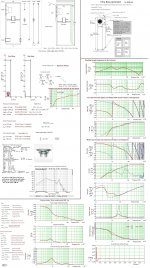Here are some small-ish desktop speakers I built for use with my laptop. The driver is the Tang Band W4-1320SIF 4" Bamboo cone fullrange. I decided on a DBR for the enclosure as I never heard one before and don't see many folks building these. I used a technique that I believe is originally from George Augspurger and is found in a Weems book. It's pretty much what is detailed over on this webpage. There already was a DBR project online, called the Bandit, but I went for somewhat larger dimensions in my build. I still wanted to know how such a bass alignment might turn out, so I simulated in this very neat online simulator that is very flexible. I know of no other software that lets your do DBR, other than making your own in Akabak. Hornresp can do Fostex-style DBR though, but the Augspurger/Weems method gave better results in simulation.

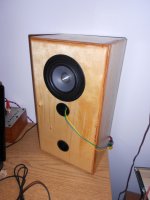
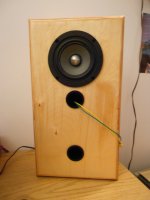
The larger chamber is ~6L and the smaller one ~3L. The external tunings are ~70Hz and ~140Hz. I'll measure the actual frequencies soon. External dimensions are 15.75" high, 8.5" wide and 7.25" deep.
It's not final, as I still need to make gaskets for the drivers and glue the vents proper if they don't need further tweaking. I also have yet to add any lining material to the driver chamber. No binding posts yet even, hence the gator clip wires coming out the vents. I was itching to listen to these. smile
They can do some useful bass, pretty much what I was expecting from the simulation. Midrange is quite clear, but seems a hair recessed since I'm used to the Fostex FF125K on which it actually was prominent. Highs seem well extended on-axis, but you quickly lose them when moving a bit off-axis. There is a bit of brightness that I'll for now attribute to the ~7kHz peak we see in the FR. It's not too aggressive and I can bare it, I'll see what happens with break-in. No real need for BSC with such a placement IMO. I've played various tracks covering a wide range of genres I listen to and they did well on pretty much everything. Even some Devin Townsend (Canadian heavy-metal dude with a wall-of-sound approach to mixing/mastering) sounded good, though I would not drive them too hard with that stuff. They have a headphone-like quality. Driver centers are 12" off the desktop, whereas the FF125K boxes had it around 8", a definite improvement.
IG



The larger chamber is ~6L and the smaller one ~3L. The external tunings are ~70Hz and ~140Hz. I'll measure the actual frequencies soon. External dimensions are 15.75" high, 8.5" wide and 7.25" deep.
It's not final, as I still need to make gaskets for the drivers and glue the vents proper if they don't need further tweaking. I also have yet to add any lining material to the driver chamber. No binding posts yet even, hence the gator clip wires coming out the vents. I was itching to listen to these. smile
They can do some useful bass, pretty much what I was expecting from the simulation. Midrange is quite clear, but seems a hair recessed since I'm used to the Fostex FF125K on which it actually was prominent. Highs seem well extended on-axis, but you quickly lose them when moving a bit off-axis. There is a bit of brightness that I'll for now attribute to the ~7kHz peak we see in the FR. It's not too aggressive and I can bare it, I'll see what happens with break-in. No real need for BSC with such a placement IMO. I've played various tracks covering a wide range of genres I listen to and they did well on pretty much everything. Even some Devin Townsend (Canadian heavy-metal dude with a wall-of-sound approach to mixing/mastering) sounded good, though I would not drive them too hard with that stuff. They have a headphone-like quality. Driver centers are 12" off the desktop, whereas the FF125K boxes had it around 8", a definite improvement.
IG
Thanks for pointing out the website describing a DBR and the neat calculator page. I ,might give this a go in AkAbak one day but still don't quite understand how to tune three different ports relative to one another. Maybe this is analogous to the double horn I simulated? The point is to get wide and smooth extension by having one fill in the dips of the other.
As far as I can tell, the DBR's bass extension will pretty much be that of the added volumes tuned to the lowest Fb. Seems like what we're after here is a reduction in excursion above the lowest Fb. I think the internal port is there to unload Vb1 into Vb2 and these will then act as a single volume with twice the vent area to the outside. One might think the internal vent would tune the same as that of Vb1-->outside, but it's mass-loaded by the smaller Vb2 and will tune somewhere in between.
IG
IG
the DBR concept can be boiled down to this: design a standard bass reflex with the parameters you want; in this case, 9 liters tuned to 70hz. Determine the port length/width needed for two ports. Then divide the volume into two separate chambers equaling 2/3 and 1/3 total volume, with the driver in the larger chamber, and connect the two chambers with a third port of equal length to the first two. That's all there is to it!
the DBR concept can be boiled down to this: design a standard bass reflex with the parameters you want; in this case, 9 liters tuned to 70hz. Determine the port length/width needed for two ports. Then divide the volume into two separate chambers equaling 2/3 and 1/3 total volume, with the driver in the larger chamber, and connect the two chambers with a third port of equal length to the first two. That's all there is to it!
Yes, that's pretty much the procedure!
Isn't it DCR Double Chamber Reflex ?
A port above and a port below the driver would have worked too.
Putting the driver on the slim side of the box, too.
making the box with irregular shape base; putting the ducts on the rear ( that, I haven't tried )
I'm not sure how it was called in the Weems book, but DCR does help differentiate it from the Fostex-style of DBR, where the first chamber is smaller and has no port to the outside. There was a larger mid/upper-bass notch in simulation with the Fostex method.
IG
...There was a larger mid/upper-bass notch in simulation with the Fostex method.
IG
Hi IG,
FYI: The upper Bass notch can be avoided/suppressed if a DBR dimensions are elongated in order to form a quarter wave design instead of a normal chubby BR type.
See an example of an Quarter-wave infra DBR design located in the : Graham-Holliman thread:
http://www.diyaudio.com/forums/subw...oupled-infra-bass-speaker-31.html#post2879125
b
Attachments
Hi IG,
FYI: The upper Bass notch can be avoided/suppressed if a DBR dimensions are elongated in order to form a quarter wave design instead of a normal chubby BR type.
See an example of an Quarter-wave infra DBR design located in the : Graham-Holliman thread:
http://www.diyaudio.com/forums/subw...oupled-infra-bass-speaker-31.html#post2879125
b
That notch will often be located high enough that a mass-loaded QW chamber won't need to be too long, good tip!
In my case, it's very narrow and only a few dB's deep. Look at the simulation versus measured response:
An externally hosted image should be here but it was not working when we last tested it.
An externally hosted image should be here but it was not working when we last tested it.
IG
IG,
By notch, do you mean that little dip near 150 Hz that is 2 dB deep? That's hardly a problem. But if elongating bottom chamber removes it that is interesting. I should build the model in AkAbak. How is the transient response of a DCR? Do you have impulse functions to show?
By notch, do you mean that little dip near 150 Hz that is 2 dB deep? That's hardly a problem. But if elongating bottom chamber removes it that is interesting. I should build the model in AkAbak. How is the transient response of a DCR? Do you have impulse functions to show?
IG,
By notch, do you mean that little dip near 150 Hz that is 2 dB deep? That's hardly a problem. But if elongating bottom chamber removes it that is interesting. I should build the model in AkAbak. How is the transient response of a DCR? Do you have impulse functions to show?
Yes, that little blip. It is hardly a problem indeed, being fairly shallow (2dB/div scale) and narrow. The Fostex-DBR was much deeper in simulation though, but probably not awful in the end.
I have the IR in my HolmImpulse file, don't have access to it now though.
IG
Blakksheppe turned me onto this link in the Panpipe thread showing a triple-quad- and even penta reflex enclosure. Pretty cool - not sure how it all affects transient response and impulse.
MCAP-CR Family
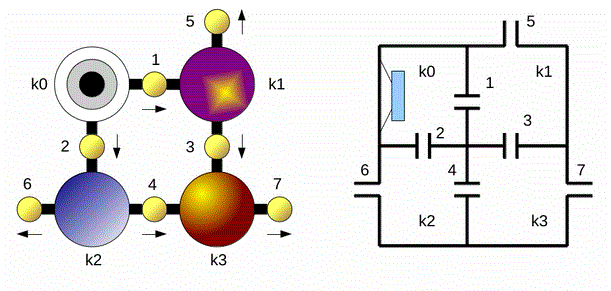
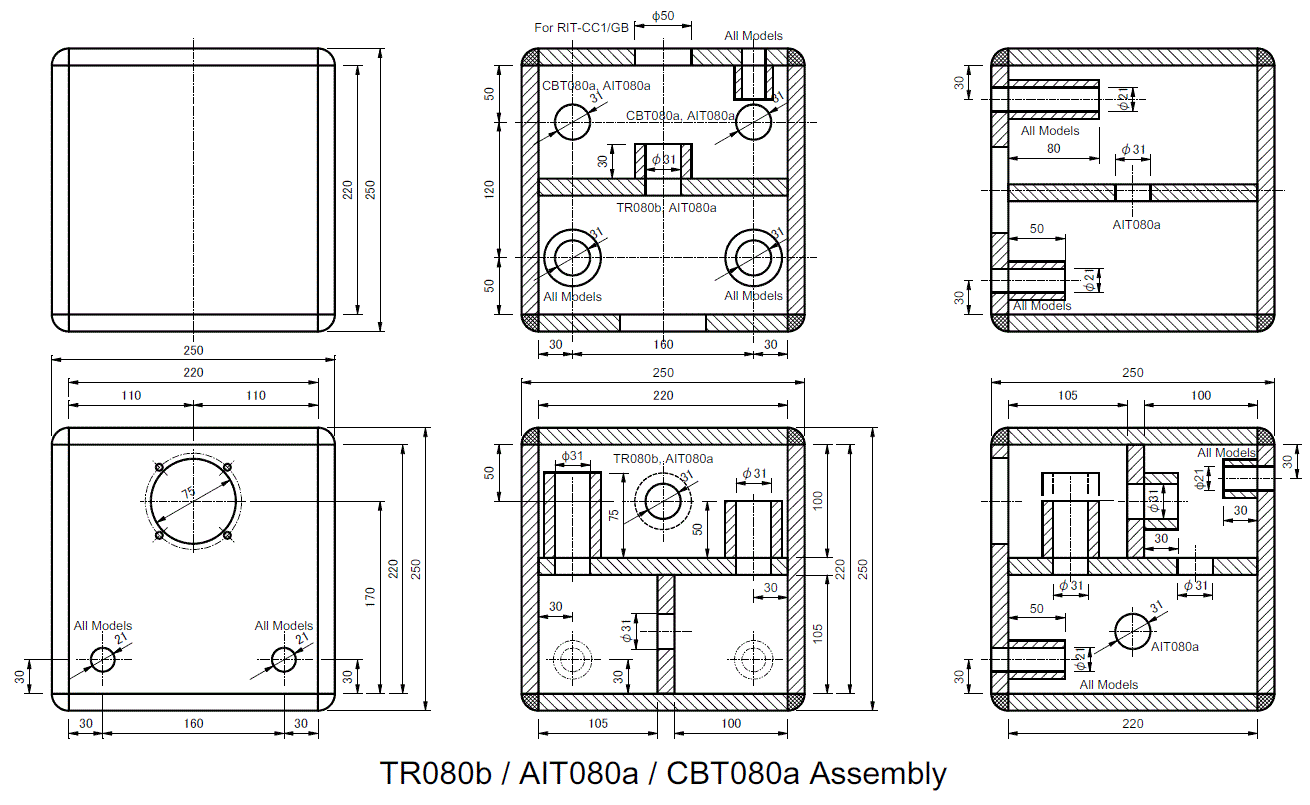
MCAP-CR Family
Last edited:
Blakksheppe turned me onto this link in the Panpipe thread showing a triple-quad- and even penta reflex enclosure. Pretty cool - not sure how it all affects transient response and impulse.
MCAP-CR Family


Thanks for posting this!
I don't recall where it was, maybe it's linked or hosted up there, just don't have time to look now, but I came across an Excel (iirc) worksheet that allowed calculations for N-levels of reflex loading. I'll try to look for it.
IG
IG,
What are the internal dimensions of your DBR box? I used 7x8x10 and 7x8x5 inches and it is not close to the volumes you describe. Also what are your port diameters and lengths? My initial model shows a huge dependence on placement relative to back wall and above desk height. I get a big cancellation dip near 150 Hz. Maybe lack of internal damping on my model?
What are the internal dimensions of your DBR box? I used 7x8x10 and 7x8x5 inches and it is not close to the volumes you describe. Also what are your port diameters and lengths? My initial model shows a huge dependence on placement relative to back wall and above desk height. I get a big cancellation dip near 150 Hz. Maybe lack of internal damping on my model?
IG,
What are the internal dimensions of your DBR box? I used 7x8x10 and 7x8x5 inches and it is not close to the volumes you describe. Also what are your port diameters and lengths? My initial model shows a huge dependence on placement relative to back wall and above desk height. I get a big cancellation dip near 150 Hz. Maybe lack of internal damping on my model?
Internal width is 7.25", depth is 5.75". The top chamber is 9" high, bottom chamber 4.5" high. All three vents are 1.375" in diameter and 4" long.
IG
Just tried this enclosure using the dbdynamix calculator for the same curiosity using an AN8. The volume was the same as the suggested commonsense audio micromonitor but with the ports tuned to 60hz. In room measurement shows a roll off at about 80hz with 60hz about 30db down in output. Might have a good application for home cinema as the steep roll off could help with integration with a sub. Had to stuff the driver chamber hard though to remove mid bass colouration and midrange shout so probably not a DCR anymore. Resonant chamber left bare. Good with simple music especially the bass notes of an acoustic guitar and vocals. Other than that, not much else.




The vent implementation is clever but I fear the very high wall drag ratio is adding additional damping (Fonken-like) that may not be accounted for in the model, unless the model was specifically for narrow slot-like channel vents.
My thought exactly. They may tune somewhat lower and overdamp.
I have my three vents fairly close to each other and as close to centered as possible in their respective volumes. I had to ofset the internal vent a bit to clear the other ones.
IG
- Status
- This old topic is closed. If you want to reopen this topic, contact a moderator using the "Report Post" button.
- Home
- Loudspeakers
- Full Range
- TB W4-1320SIF double bass-reflex
